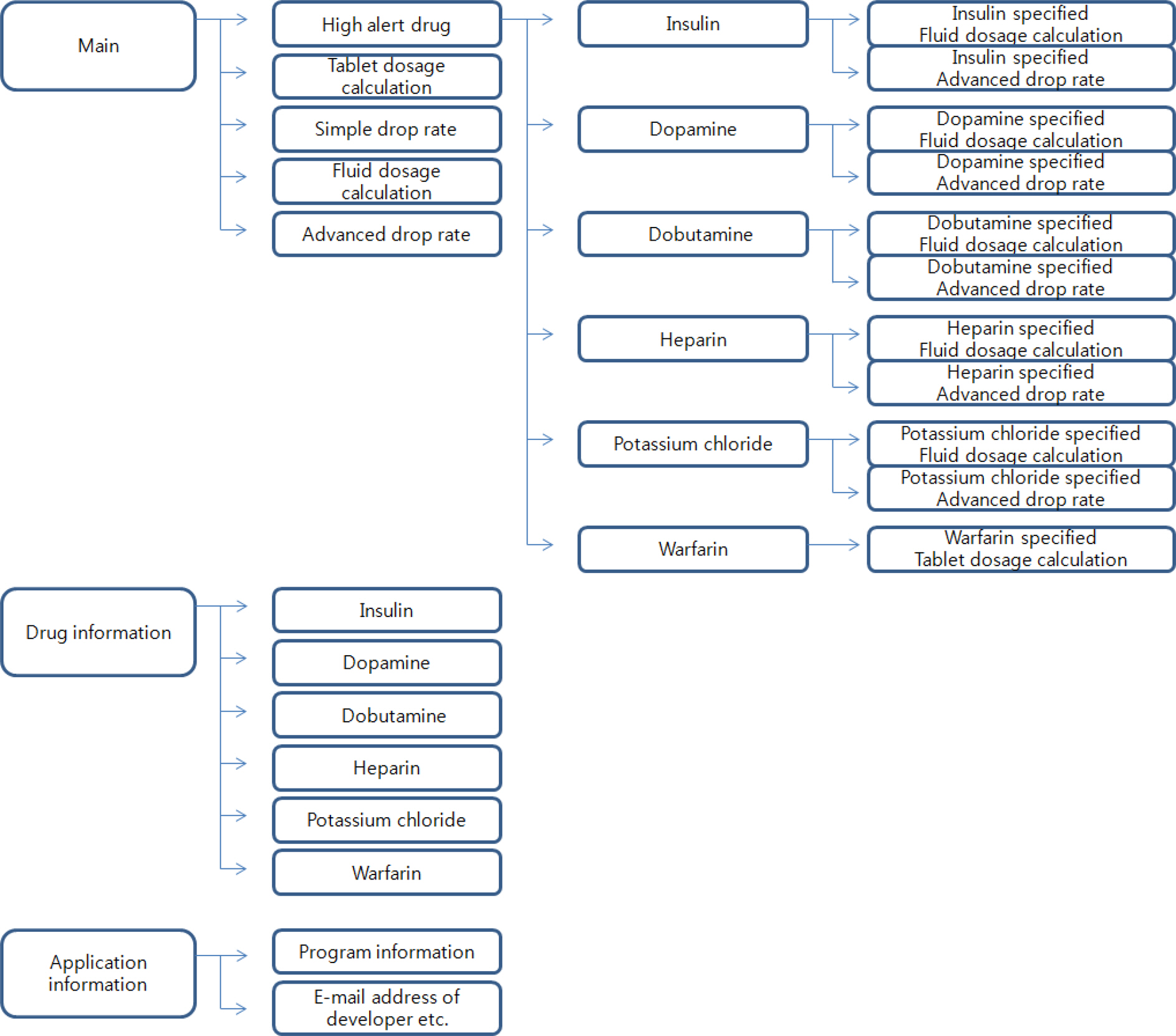Department of Nursing, Pukyong National University, Busan, Korea
Copyright © 2014 Korean Society of Adult Nursing
This is an Open Access article distributed under the terms of the Creative Commons Attribution Non-Commercial License (http://creativecommons.org/licenses/by-nc/3.0) which permits unrestricted non-commercial use, distribution, and reproduction in any medium, provided the original work is properly cited.
| Variables (No. of items) | Variables | Total | Exp. (n=33) | Cont. (n=26) | x2 or t (p) |
|---|---|---|---|---|---|
| n (%) or M±SD | n (%) or M±SD | n (%) or M±SD | |||
| Age (year) | 23~25 | 28 (47.5) | 13 (39.4) | 15 (46.4) | 1.95 (.196) |
| ≥26 | 31 (52.5) | 20 (60.6) | 11 (64.5) | ||
| M±SD | 26.53±3.16 | 27.12±3.74 | 25.77±2.05 | 1.77 (.083) | |
| Marital status | Married | 5 (8.5) | 3 (9.1) | 2 (7.7) | 0.04 (1.000) |
| Single | 54 (91.5) | 30 (90.9) | 24 (92.3) | ||
| Education | College | 7 (11.9) | 3 (9.1) | 4 (15.4) | 0.55 (.688) |
| Bachelor | 52 (88.1) | 30 (90.9) | 22 (84.6) | ||
| Total nursing experience (year) | ≤3 | 24 (40.7) | 14 (42.4) | 10 (38.5) | 0.10 (.795) |
| >3 | 35 (59.3) | 19 (57.6) | 16 (61.5) | ||
| M±SD (month) | 44.10±28.78 | 48.15±35.76 | 38.94±15.35 | 1.33 (.190) | |
| Position† | Charge nurse | 3 (5.1) | 2 (6.1) | 1 (3.8) | 0.15 (1.000) |
| Staff nurse | 56 (94.9) | 31 (93.9) | 25 (96.2) | ||
| Knowledge of high alert medication (20) | 0.71±0.11 | 0.68±0.10 | 0.74±0.10 | 2.30 (.025) | |
| Certainty of knowledge (20) | 2.71±0.61 | 2.63±0.52 | 2.80±0.71 | 1.05 (.297) | |
| Stability of medication administration (20) | 0.91±0.63 | 0.77±0.56 | 1.09±0.69 | 1.97 (.054) | |
| Confidence for single checking medication (14) | 3.33±0.51 | 3.34±0.55 | 3.31±0.44 | -0.23 (.817) | |
| Medication safety activities (9) | 4.20±0.42 | 4.13±0.43 | 4.29±0.38 | 1.55 (.127) | |



Homogeneity Test of Study Variables at the Baseline (N=59)
| Variables (No. of items) | Variables | Total | Exp. (n=33) | Cont. (n=26) | x2 or t (p) |
|---|---|---|---|---|---|
| n (%) or M±SD | n (%) or M±SD | n (%) or M±SD | |||
| Age (year) | 23~25 | 28 (47.5) | 13 (39.4) | 15 (46.4) | 1.95 (.196) |
| ≥26 | 31 (52.5) | 20 (60.6) | 11 (64.5) | ||
| M±SD | 26.53±3.16 | 27.12±3.74 | 25.77±2.05 | 1.77 (.083) | |
| Marital status | Married | 5 (8.5) | 3 (9.1) | 2 (7.7) | 0.04 (1.000) |
| Single | 54 (91.5) | 30 (90.9) | 24 (92.3) | ||
| Education | College | 7 (11.9) | 3 (9.1) | 4 (15.4) | 0.55 (.688) |
| Bachelor | 52 (88.1) | 30 (90.9) | 22 (84.6) | ||
| Total nursing experience (year) | ≤3 | 24 (40.7) | 14 (42.4) | 10 (38.5) | 0.10 (.795) |
| >3 | 35 (59.3) | 19 (57.6) | 16 (61.5) | ||
| M±SD (month) | 44.10±28.78 | 48.15±35.76 | 38.94±15.35 | 1.33 (.190) | |
| Position |
Charge nurse | 3 (5.1) | 2 (6.1) | 1 (3.8) | 0.15 (1.000) |
| Staff nurse | 56 (94.9) | 31 (93.9) | 25 (96.2) | ||
| Knowledge of high alert medication (20) | 0.71±0.11 | 0.68±0.10 | 0.74±0.10 | 2.30 (.025) | |
| Certainty of knowledge (20) | 2.71±0.61 | 2.63±0.52 | 2.80±0.71 | 1.05 (.297) | |
| Stability of medication administration (20) | 0.91±0.63 | 0.77±0.56 | 1.09±0.69 | 1.97 (.054) | |
| Confidence for single checking medication (14) | 3.33±0.51 | 3.34±0.55 | 3.31±0.44 | -0.23 (.817) | |
| Medication safety activities (9) | 4.20±0.42 | 4.13±0.43 | 4.29±0.38 | 1.55 (.127) | |
Exp.=experimental group; Cont.=control group.
†Fisher's exact test.
Changes of Study Variables between Pre-post Stages in Each Group
| Variables | Exp. (n=33) | t (p) | Cont. (n=26) | t (p) | Difference of Post-Pre | t (p) | |||
|---|---|---|---|---|---|---|---|---|---|
| Pre | Post | Pre | Post | Exp. | Cont. | ||||
| M±SD | M±SD | M±SD | M±SD | M±SD | M±SD | ||||
| Knowledge of high alert medication | 0.68±0.10 | 0.69±0.12 | 0.55 | 0.74±0.10 | 0.75±0.09 | 0.60 | 0.01±0.11 | 0.01±0.10 | -0.03 |
| (.584) | (.555) | (.973) | |||||||
| Certainty of knowledge | 2.63±0.52 | 2.96±0.47 | 3.51 | 2.80±0.71 | 2.97±0.64 | 1.27 | 0.32±0.53 | 0.17±0.68 | 0.97 |
| (.001) | (.218) | (.334) | |||||||
| Stability of medication administration | 2.16±0.25 | 2.25±0.28 | 1.58 | 2.33±0.27 | 2.39±0.26 | 1.29 | 0.09±0.31 | 0.07±0.26 | 0.27 |
| (.125) | (.210) | (.785) | |||||||
| Confidence for single checking medication | 3.34±0.55 | 3.39±0.54 | 0.60 | 3.31±0.44 | 3.37±0.42 | 0.58 | 0.04±0.41 | 0.05±0.46 | -0.08 |
| (.552) | (.570) | (.938) | |||||||
| Medication safety activities | 4.13±0.43 | 4.23±0.43 | 1.43 | 4.29±0.38 | 4.24±0.45 | -0.63 | 0.10±0.39 | -0.05±0.42 | 1.40 |
| (.163) | (.535) | (.164) | |||||||
| Number of daily use | 7.77±±5.90 | ||||||||
| Frequency of use | 28.29±20.84 | ||||||||
| Program satisfaction | 3.00±0.95 | ||||||||
Exp.=experimental group; Cont.=control group.
Exp.=experimental group; Cont.=control group. Fisher's exact test.
Exp.=experimental group; Cont.=control group.